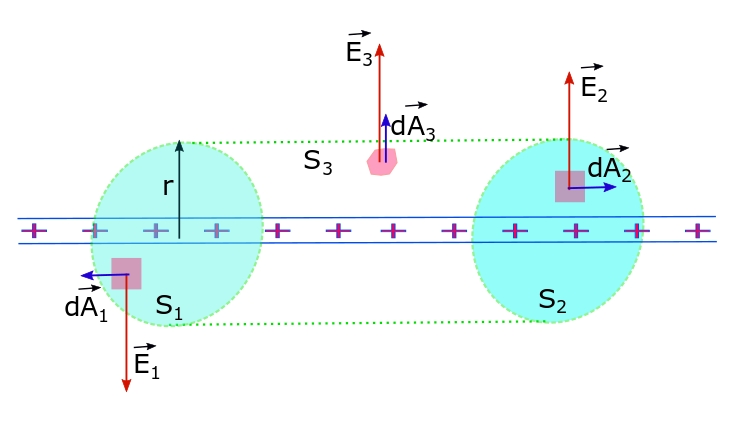Lectures on Electricity and Magnetism — new series of lectures – EML – 2
All articles in this series will be found here. Click on link to left or search for menu “E AND M BASICS” on top.
Application of Gauss Law To Problems with Cylindrical And Planar Symmetry, EML-2
In our last lecture we laid a good foundation about the concepts of electric field, lines of force, flux and Gauss Law. It can be found here; EML1. Today we will discuss how to apply Gauss Law to find the electric field if cylindrical or planar symmetries are present in the problem.
+ click to see more about this article
This article belongs to a group of lectures I intend to prepare for their online dissemination — these were delivered in a physical format, beginning with hand written notes that were delivered in a classroom full of students. This series is on Electricity and Magnetism and bears the name sake Electricity and Magnetism Lectures and the number of the lecture will be appended to the end to reflect the same. eg the current lecture will be named EML – 2 . This lecture was delivered to honors students on 31st Jan 2017.
In the meanwhile if you can’t wait and you need some of these concepts at the earliest, here is a slide-share presentation I had made roughly 5 years ago that consists of “some of the things” an undergrad needs: Electricity and Magnetism slides. There are other slides on different topics at that account of mine on slideshare.net (such as; Introduction to Quantum Mechanics , and these are quite well received by the community for their usefulness).
Cylindrical Symmetry
Infinitely long rod of uniform charge density
An infinitely long rod of negligible radius has a uniform (linear) charge density of λ. Calculate the electric field at a distance r from the wire.
An infinitely long rod possesses cylindrical symmetry.
Electric field E must be radially outwards from axis of symmetry of the rod, — for +ve charge.
Consider a Gaussian surface which is cylindrical. Magnitude of the field E (|E|) is constant on the surface of the cylinder of radius r. A Gaussian surface is one closed surface that conforms with the symmetry of the situation and encloses a given amount of charge whose electric field is to be determined.
The amount of charge that is enclosed in the Gaussian cylinder is given by: qencl = λl. Here we have assumed that a linear charge density — i.e. charge per unit length λ is carried by the rod and the Gaussian cylinder has a height/length of l. See the diagram shown below.
There are 3 components of the cylindrical Gaussian surface: side-caps S1 and S2 and curved surface S3. We can accordingly write the flux for each one of them (where the electric field is uniform over the entire surface component) and add them up for the total flux that emerges out of the Gaussian surface.
Now we can apply Gauss Law: ΦE = E(2πrl) = λl/ε0. This gives us the electric field strength (magnitude) of the infinitely long uniformly charged rod; .

We can now plot this field strength as a function of the radial distance. We can also show the cross sectional view of how the field direction looks like. The following two diagrams show these two aspects respectively.


Planar Symmetry
Infinitely large non-conducting plane
For an infinitely large non-conducting plane in the xy plane with uniform surface charge density σ; determine the electric field everywhere in space.
The configuration has planar symmetry.
Electric field E is perpendicularly away from the plane. We can thus write . The field is constant on planes parallel to the non-conducting plane.

Lets choose a cylindrical Gaussian surface as shown in the following diagram, its called a Gaussian pillbox.

The total charge enclosed is obviously σA where A=A1=A2 is the area of the end-cap.
Total flux is given by: .
The two ends are at the same distance, so E1=E2=E. With that recognition the flux is now given by: ΦE = 2EA.
Now we can apply Gauss Law as we did earlier: ΦE = 2EA = qencl/ε0=(σA)/ε0. This gives us the electric field strength (magnitude) of the infinitely large uniformly charged non-conducting plane; .


Leave a comment